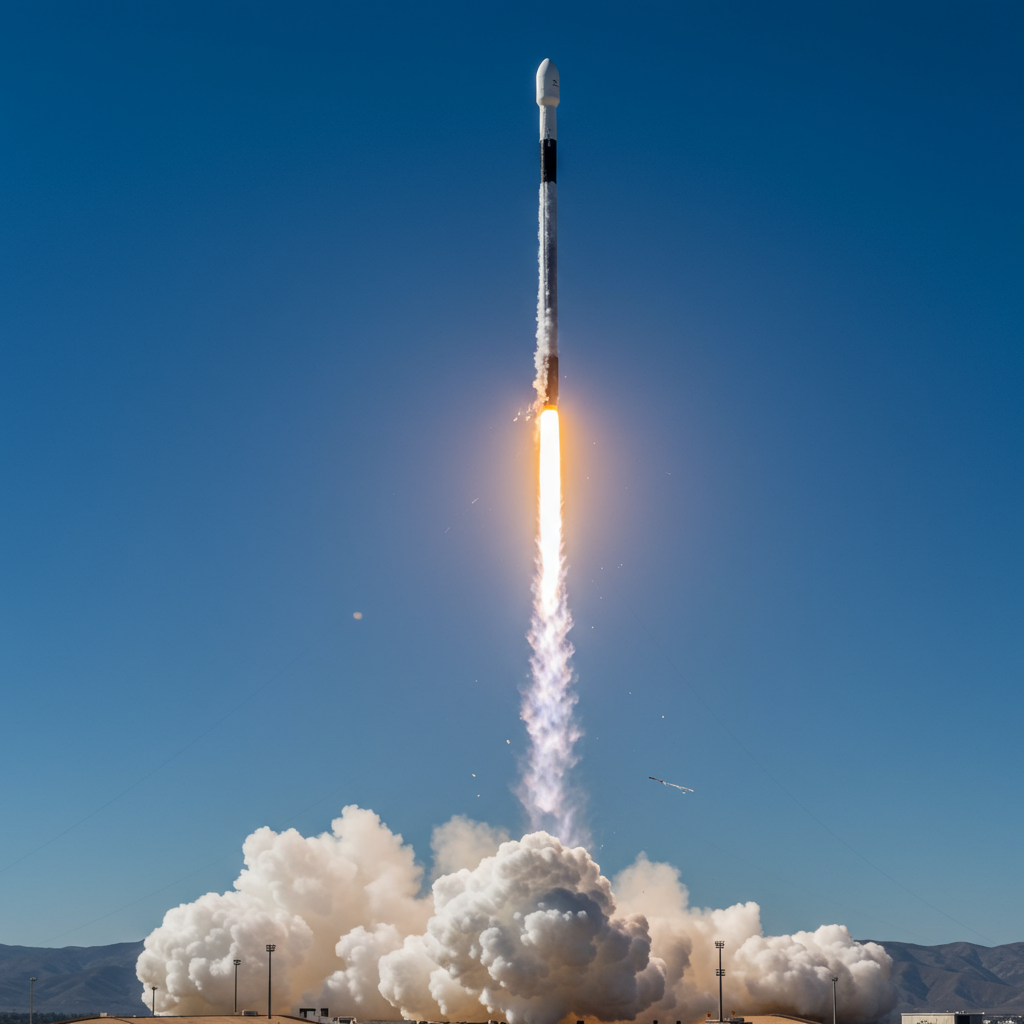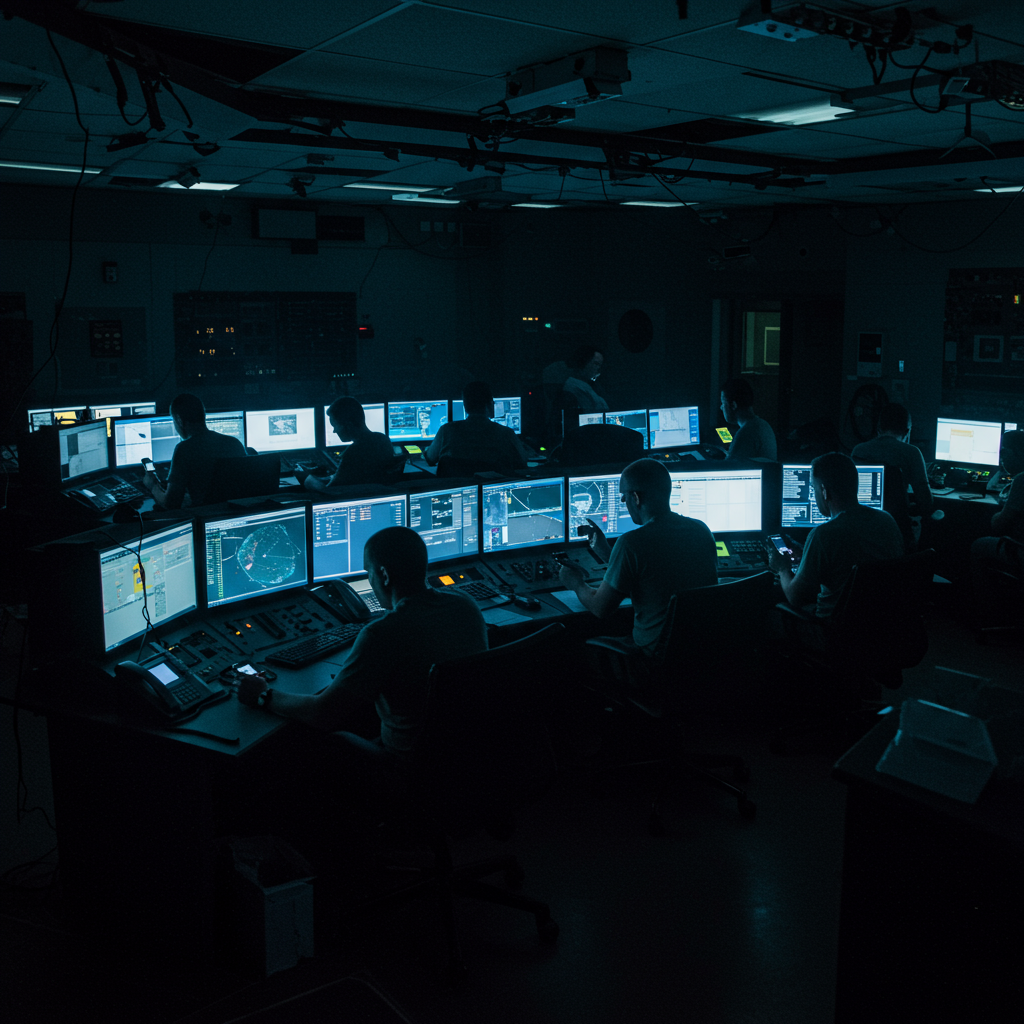Our turbulent Sun, the 93-million-mile-distant star at the heart of our solar system, is currently in a state of peak activity. This period, known as solar maximum, represents the climax of the Sun’s approximately 11-year cycle, a pattern of weather similar to Earth’s storm seasons. Unlike the quieter periods at the beginning and end of the cycle, solar maximum is characterized by a surge in sunspots, solar flares, and giant eruptions.
Adding to the Sun’s dramatic phase, its global magnetic field is undergoing a significant and expected transformation: the magnetic poles are flipping. This regular phenomenon occurs around the peak of solar maximum, marking the transition toward the next solar minimum. Unlike the stable, distinct north and south poles of a typical bar magnet, the Sun’s magnetic field becomes incredibly complex and disordered during this reversal process.
For a brief period during solar maximum, the magnetic field at the Sun’s poles can appear chaotic, showing patches of both north and south polarity mixed together. Following this turbulent stage, a single polarity will eventually re-establish dominance at each pole, but in the reversed configuration. This entire process is part of a larger, roughly 22-year Hale cycle, during which the Sun’s magnetic field flips and then flips back to its original orientation.
Catching the Flip from a Unique Angle
Observing this crucial magnetic reversal, particularly at the Sun’s poles, has historically been challenging. All previous close-up images and data of the Sun have primarily come from spacecraft orbiting within or near the ecliptic plane – the flat disk where Earth and other planets travel. The Sun’s poles, often referred to by scientists as “terra incognita” (unknown territory), have remained largely hidden from detailed view.
Enter the Solar Orbiter mission, a collaboration between the European Space Agency (ESA) and NASA. Launched in 2020, this spacecraft was specifically designed to leave the ecliptic plane and gain unprecedented views of the Sun’s polar regions. In a key maneuver in February, Solar Orbiter used a gravity assist from Venus to tilt its orbit.
This allowed the spacecraft, in March 2025, to achieve a viewing angle of approximately 17 degrees below the solar equator, providing the first-ever close-range look at the Sun’s southern pole. While an earlier mission, the defunct NASA/ESA Ulysses, flew over the poles in the 1990s, it lacked the imaging capabilities of Solar Orbiter’s sophisticated instruments.
Unpacking the Polar “Hot Mess”
What Solar Orbiter’s instruments are seeing at the poles is precisely this complex, disorganized magnetic field state characteristic of solar maximum. The spacecraft is equipped with ten instruments, each designed to study different aspects of the Sun, from its visible surface to its extended atmosphere.
Three instruments were particularly crucial for these initial polar views:
Polarimetric and Helioseismic Imager (PHI): Captures images in visible light and maps the Sun’s surface magnetic field, revealing the mixed polarities at the south pole.
Extreme Ultraviolet Imager (EUI): Images the incredibly hot, million-degree plasma of the Sun’s outer atmosphere (corona).
Spectral Imaging of the Coronal Environment (SPICE): Analyzes light from different chemical elements at various temperatures to study layers above the surface, achieving a first-ever measurement of material velocity at high solar latitudes.
Analyzing the combined data from these instruments is allowing scientists to begin understanding the dynamics of these mysterious polar regions during the magnetic flip.
Why Do Solar Poles Matter?
Understanding the Sun’s approximately 11-year cycle and its magnetic pole reversal is a fundamental goal of solar physics. Scientists believe the key to understanding the entire solar dynamo – the internal mechanism that generates the Sun’s magnetic field and drives the solar cycle – lies in studying the poles.
Furthermore, the Sun’s activity directly impacts Earth. Increased activity during solar maximum, coupled with the complexities of the magnetic field flip, leads to more intense space weather events. Powerful solar flares and coronal mass ejections (CMEs) can send vast streams of charged particles hurtling towards Earth. These particles interact with our planet’s magnetic field and atmosphere, causing geomagnetic storms that can disrupt power grids, communication systems, satellites, and navigation (like GPS).
The increased frequency of spectacular aurora displays (Northern and Southern Lights) seen recently across wider areas is a direct result of the Sun nearing solar maximum and sending more particles our way. Solar Orbiter’s observations of the poles are expected to improve our ability to predict these space weather events, providing crucial time to prepare for their potential impacts.
Interestingly, the magnetic flip also has a beneficial effect: it causes the heliospheric current sheet, a vast surface extending outwards from the Sun, to become wavier. This increased waviness enhances shielding against galactic cosmic rays, high-energy particles from outside the solar system that can pose risks to spacecraft and astronauts.
The speed at which the Sun’s magnetic field re-establishes a stable, reversed dipole configuration after the flip also provides clues about the strength of the next* solar cycle. A rapid return to a dipole usually suggests a more active subsequent cycle.
Looking Ahead
These initial views are just the beginning. Over the coming years, Solar Orbiter will continue to increase its orbital tilt, reaching 23 degrees by December 2026 and potentially 33 degrees by 2029. These steeper angles will provide even better views, allowing all of the spacecraft’s instruments to collect unprecedented data to map both poles fully. This mission promises to transform our understanding of the Sun’s magnetic field, its internal workings, and how its activity impacts our planet and the wider solar system.
References
- mashable.com
- <a href="https://www.esa.int/ScienceExploration/SpaceScience/SolarOrbiter/SolarOrbitergetsworld-firstviewsoftheSunspoles”>www.esa.int
- www.space.com
- www.bbc.com
- www.livescience.com




